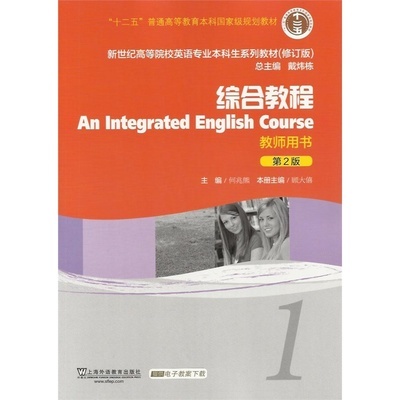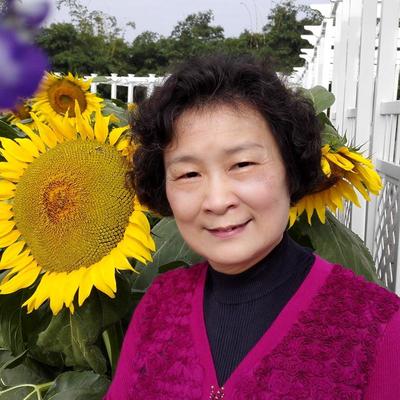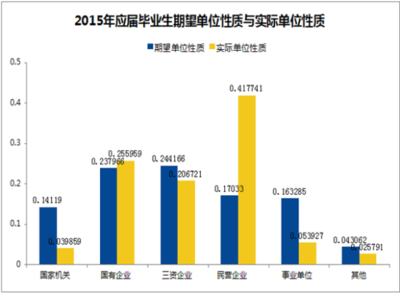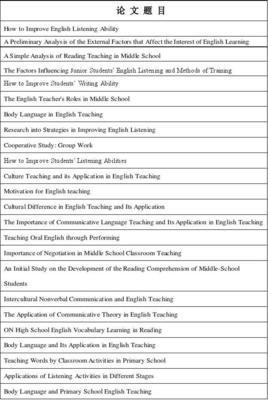语言学的定义
语言学的研究范畴
几对基本概念
语言的定义
语言的甄别特征
What is linguistics? 什么是语言学?
Linguistics is generally defined as the scientific study oflanguage. It studies not any particular language, but languages ingeneral. 语言学是对语言科学地进行研究的学科。语言学所要研究的不是某一种特定的语言,而是人类所有语言的特性。
The scope of linguistics 语言学研究的范畴
Phonetics语音学Phonology音系学Morphology形态学Syntax句法学Semantics语义学Pragmatics语用学Sociolinguistics社会语言学Psycholinguistics心理语言学Applied linguistics应用语言学
Prescriptive vs. descriptive 规定性与描述性
Descriptive:a linguistic study describes and analyzes thelanguage people actually use.
Prescriptive: it aims lay down rules for "correct"behavior.
Modern linguistics is descriptive; its investigations are basedon authentic, and mainly spoken data.
Traditional grammar is prescriptive; it is based on "high"written language
Synchronic vs. diachronic 共时性与历史性
The description of a language at some point in time is asynchronic study
The description of a language as it changes through time is adiachronic study
In modern linguistics, synchronic study seems to enjoy priorityover diachronic study.
Speech and writing 口头语与书面语
Speech enjoys priority over writing in modern linguistics studyfor the following reasons:
(1) speech precedes writing in terms of evolution
(2) a large amount of communication is carried out in speech tanin writing
(3) speech is the form in which infants acquire their nativelanguage
Language and parole 语言与言语
Language refers to the abstract linguistic system shared by allthe members of a speech community
Parole refers to the realization of language in actual use
Competence and performance 能力与运用
Chomsky defines competence as the ideal users' knowledge of therules of his language
Performance: the actual realization of this knowledge inlinguistic communication
What is language? 什么是语言?
Language is a system of arbitrary vocal symbols used for humancommunication
Characteristics of language: 语言的特性
Language is a rule-governed system
Language is basically vocal
Language is arbitrary (the fact different languages havedifferent words for the same object is a good illustration of thearbitrary nature of language. This conventional nature of languageis well illustrated by a famous quotation from Shakespeare's play"Romeo and Juliet": "A rose by any other name would smell assweet.")
Language is used for human communication
Design features of language 语言的甄别特征
American linguist Charles Hockett specified 12 designfeatures:
1) arbitrariness 武断性
2) productivity 创造性
3) duality 二重性
4) displacement移位性
5) cultural transmission 文化传递性
二、音系学
语言的声音媒介
什么是语音学
发音器官
音标……宽式和严式标音法
英语语音的分类
音系学和语音学
语音、音位、音位变体
音位对立、互补分部、最小对立
几条音系规则
超切分特征
Two major media of communication: speech and writing
The limited range of sounds which are meaningful in humancommunication and are of interest to linguistic studies are thephonic medium of language.用于人类语言交际的声音称为语音,这些数目有限的一组语音构成了语言的声音媒介。
Phonetics语音学: is defined as the study of the phonic medium oflanguage; it is concerned with all the sounds that occur in theworld's language.
Three branches of phonetics : articulatory phonetics 发音语音学(mosthighly developed), auditory phonetics 听觉语音学and acoustic phonetics声学语音学
Organs of speech 发音器官
The articulatory apparatus of a human being are contained inthree i————mportant areas or cavities:
The pharyngeal cavity咽腔——the throat
The oral cavity口腔——the mouth
The nasal cavity 鼻腔——the nose
Vibration of the vocal cords (声带) results in a quality of speechsounds called "voicing" 浊音,which is a feature of all vowels 元音 andsome consonants 辅音。
单词补充: 01) velum: The soft palate. 软腭
02) uvula: A small, conical, fleshy mass of tissue suspended fromthe center of the soft palate. 小舌,悬雍垂悬垂在软腭中央的小的圆锥状肉块
03) larynx: n. 喉
04) vocal cord: 声带
05) membrane: n. A thin, pliable layer of tissue coveringsurfaces or separating or connecting regions, structures, or organsof an animal or a plant. 膜薄而柔软的组织层,覆盖在表面或分割连接各种区域、结构或动植物器官
06) the soft palate: 软腭
07) the hard palate: 硬腭
08) the teeth ridge: 齿龈
09) alveolus: A tooth socket in the jawbone 牙槽颚骨处的牙床
10) the teeth: 牙齿
11) the lips: 上下唇
12) blade of tongue: 舌面
13) back of tongue: 舌根
14) pharyngeal cavity: 咽腔
15) nasal cavity: 鼻腔
16) velar: Articulated with the back of the tongue touching ornear the soft palate, as (g) in good and (k) incup.软腭音的用舌头后部挂触或靠近软腭清楚地发音的,如在 good中的(g)以及在 cup中的(k)
17) the tip of the tongue: 舌尖
18) the upper front teeth: 上齿
19) the roof of the mouth: 上颚
20) the lower lip: 下唇
音标……宽式和严式标音法
International Phonetic Alphabet (IPA)
The vowels (monophthongs and diphthongs)元音(单元音&双元音)
The constants 辅音
Broad transcription: transcription with letter-symbols only. (indictionaries and teaching textbooks)
用一个符号来表示一个语音的标音方式叫做宽式标音法,这种音标法常见于词典和教科书。
Narrow transcription: the transcription with diacritics.
但实际上, 同一语音在不通的语音环境中的发音不尽相同, 比如Pit和spit中的/P/音发音就不一样。
在宽式标音的基础上, 再用变音符号表示同一语音在不同的语音环境下不同发音的标音法叫做窄式标音法。
Classification of English speech sounds
英语语音的分类
The basic difference between a vowel and a constant is that inthe pronunciation of the former the air that comes from the lungsmeets with no obstruction of any kind in the throat, the nose, orthe mouth, while in that of the latter it is obstructed in one wayor another.
Classification of English constants
英语辅音分类
此主题相关图片如下:
Classification of English vowels
:the position of the tongue in the mouth舌位高低
:the openness of the mouth,口的张开程度
:the shape of the lips园唇与否
:length of the vowels元音的长度
此主题相关图片如下:
Phonology 音系学
Phonology and phonetics
音系学和语音学
Phonetics is of a general nature; it is interested in all thespeech sounds used in all human languages.
语音学研究的是人类所有语言的语音,旨在对语音进行描述和分类。
Phonology is interested in the system of sounds of a particularlanguage; it aims to discover how speech sounds in a language formpatterns and how these sounds are used to convey meaning inlinguistic communication.
音系学研究的重点是特定语言的语音体系,语音表达意义作用。
Phone,phoneme and allophone
语音,音位,音位变体
Phones, which can be simply defined as the speechsounds we use when speaking a language.
语音是语音学研究的单位, 是一个个具体的声音。
Phonology is concerned with the speech sounds which distinguishmeaning.
音位是音系学研究的单位,是抽象的概念, 每一个音位是一组语音特征的集合体,音位具有区别意义的作用。
The different which can represent a phoneme in different phoneticenvironments are called the allophones of that phoneme.
音位变体是一个音位在特定的语音环境力的具体体现, 同一音位在不同语音环境里体现为不同的变体,也就是语音。
Phonemic contrast, complementary distribution, and minimalpair
音位对立,互补分布,最小对立对
rope and robe that /P/ and /b/ can occur in the same environmentsand they distinguish meaning; therefore they are in phonemiccontrast.
可以出现在不同语音组合中的同一为止, 产生意义差别。
/P/ and /Ph/ these two allophones of the same phoneme are said tobe in complementary distribution.
When two different forms are identical in every way except forone sound segment which occurs in the same place in the strings,the two words are said to form a minimal pair. [pen] and[ben]
最小对立对指出现在同一位置上的一个音之外其余都相同的两个语音组合。
Some rules in phonology几条音系规则
Sequential rules 序列规则 :blik, klib , bilk, kilb is possible. Butlbki, ilbk, bkil , ilkb not possible.
Assimilation rules 同化规则
Deletion rule 省略规则
Sign, design, there is no {g} sound
Signature, designation the {g} is pronounced.
Delete a [g] when it occurs before a final nasal constant.
Suprasegmental features—— stress, tone,intonation
超切分特征——重音, 声调,语调
the phonemic features that occur above the level of the segmentsare called suprasegmental features;
超切分特征指切分即单音层面以上的音系特征。
三、 MORPHOLOGY 形态学请结合《词汇学中的构词法》进行学习。
语素:语言最小的意义单位
语素的类型
复合词的类型
复合词的特征
Morphology is a branch of grammar which studies the internalstructure of words and the rules by which words are formed. It isdivided into two sub-branches: inflectional morphology and lexicalor derivational morphology.
形态学研究单词的内部结构以及构词规则, 有屈折形态学和词汇形态学两大分支。
Morpheme:the smallest meaningful unit of language.
语素:语言最小的意义单位。
Free Morpheme: A free morpheme is one that can stand byitself. (independent)
自由语素可以作为单词独立使用。
Bound Morpheme: A bound morpheme is one that cannot stand byitself.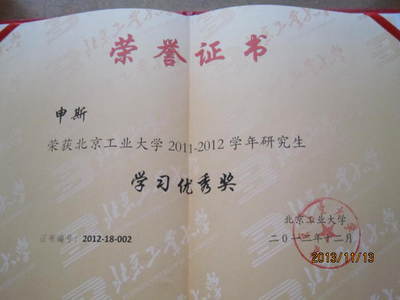
粘着语素必须和其他语素结合成单词
Bound Morpheme includes two types: (1) root (2)Affix(词缀)
1)Inflectional affixes (屈折词缀)(inflectional morphemes):
affixes attached to the end of words to indicate grammaticalrelationships are inflectional
2)Derivational affixes(派生词缀) A) prefix: A prefix comes beforewords. B)suffix
An adjective suffix(形容词后缀) that is added to the stem, whateverclassis belongs to , the result will be an adjective.
free=free root(自由词根)
Morpheme(词素)
Bound root prefix
bound derivational
affix suffix
inflectional
Root and stem(词根和词干)
1) Root 2) Stem
The differences between root and stem:
A root is the basic form of a word which cannot be furtheranalyzed without total loss of identity.
A stem is the surplus part after the cutting of inflectionalmorpheme in a word with inflectional morphemes,can be furtheranalyzed, it sometimes could be a root.
Individualistic Undesirables
Individualist (stem) undesirable (stem)
Individual (stem) desirable (stem)
dividual (stem) desire (root, stem)
divide(root, stem)
Affixation词缀法(Derivation派生法):adding word-formation orderivational affixes to stem.
Prefixation前缀@:It's the formation of new words by adding aprefixes to stems.
1)'表示否定'nagative prefixes: un-,non,in-,dis,a- etc.
2)''reversative or privative prefixes: un-,de-dis etc.
3)'表示贬义'pejorative prefixes: mis-, mal-, pseudo- etc.
4)'表示程度'degree or size prefixes: arch-,super-,out-,sub-,over-,under-,hyper-,ultra-,mini- etc.
5)'表示方向、态度'orientation & attitudeprefixes:counter-,contra-,anti-,pro- etc.
6)locative prefixes:super-,sub-,inter-,trans- etc.
7)'表示时间、次序'time and order prefixes:fore-,pre-,post-,ex-,re-etc.
8)'表示数量'number prefixes:uni-/mono-,bi-/di-,tri-,multi-/poly-etc.
9)'混杂'miscellaneous prefixes:auto-, neo-, pan-, vice-
Suffixation后缀@: It's the formation of a new word by addingsuffixes to stems.
1)noun suffixes 2)adjective suffixes 3)Adverb suffixes 4)verbsuffixes
Compounding复合法 (also called composition)
Compounding: is the formation of new words by joining two or morestems
Formation of compounds
Noun + noun(名词+名词) —— handbook, sunshine
Adjective + noun(形容词+名词)——highway, deadline
Adjective + noun + -ed(形容词+名词+ed)——white-haired, red-eyed
Verb + noun(动词+名词)——driveway, breakwater(挡水板)
Adverb + noun(副词+名词)——downtown, overburden
Noun + verb(名词+动词)——toothpick, snowfall
Verb + adverb(动词+副词)——follow-up, kick-off
Noun + adjective(名词+形容词)——world-famous, lifelong
-ing form + noun(ing+名词)——baking power, dining-room
other forms(其他)——go-between, father-in-law
Features of compounds复合词的特征
1.Orthographically书写特征
(Compounds are written in three ways: solid(airmail)hyphenated(air-conditioning) open(air force, air raid)
2.Syntactically句法特征(复合词的词性一般取决于复合词最后一个成分的词性)
3.Semantically语义特征(复合词的意义具有习语性质,许多复合词的意义都不是其构成成分意义和总和)
4.Phonetically语音特征(复合词的单词重音落在第一个构成成分上)(转)
 爱华网
爱华网